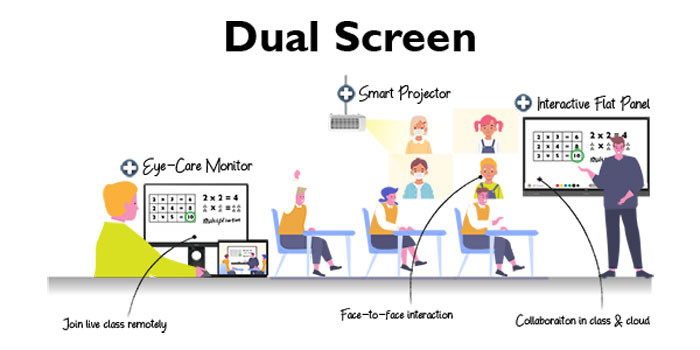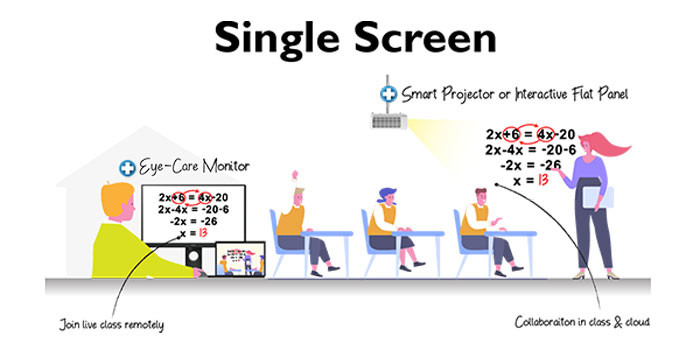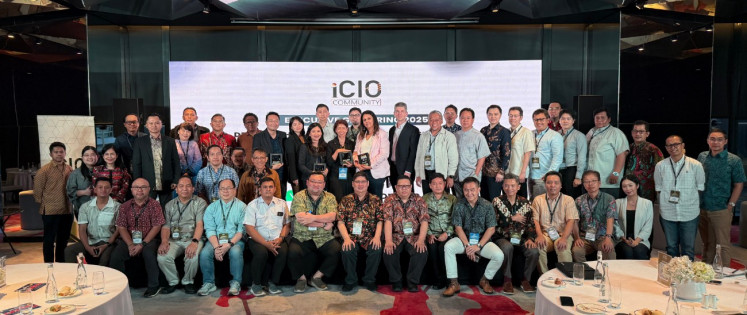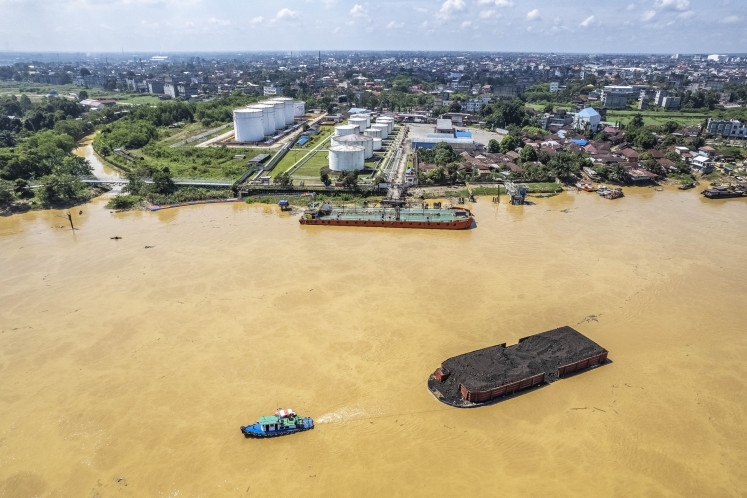Popular Reads
Top Results
Can't find what you're looking for?
View all search resultsPopular Reads
Top Results
Can't find what you're looking for?
View all search resultsCan classroom technology contribute to student well-being?
Change text size
Gift Premium Articles
to Anyone
 (Courtesy of Benq)
(Courtesy of Benq)
A
t-home learning, which was adopted in response to COVID-19 and was announced in Indonesia in early March 2020, has reportedly affected children’s well-being.
Studies have found that the psychological effects on students include boredom, fear of being left behind academically, insecurity, missing friends and even a fear of compounding their parents’ financial distress.
It comes as no surprise, therefore, to learn that students are looking forward to resuming their learning activities at school.
A survey conducted by the Indonesian Child Protection Commission (KPAI) in December 2020 found that the majority of students were eager to return to school in January 2021.
Some educational experts and organizations, including the KPAI and the Indonesian Pediatric Society (IDAI), however, have said the reopening of schools will lead to an increase in COVID-19 cases.
Delaying plans to reopen schools could reduce COVID-19 transmission. Every person in and around school premises, including teachers, staff and the public share the same risk of getting infected and infecting others, according to the IDAI.
Education and Culture Minister Nadiem Makarim said earlier that school could be reopened immediately or in stages according to each region’s capability and the decision of their regional heads. Schools that want to reopen must fulfill a checklist for face-to-face teaching and health protocols, he said.
The reopening of schools must consider face-to-face procedures, data on students and COVID-19 handling and prevention and the condition of teachers and students, who are vulnerable to exposure to the COVID-19 pandemic. “These are important to allow them to prepare health facilities, hygiene and habits to adhere to health protocols, such as wearing a mask, keeping their distance and washing their hands,” said Ais Irmawati of the Ministry of Education and Culture’s research center.
Blended learning model
Schools in Indonesia are varied in terms of their views on school reopening, which reflects the learning methods they use. This depends on the policy set up by the particular region’s head.
For example, although the Jakarta administration has stuck to a policy of at-home learning, a study is underway to explore the possibility of reopening schools in stages, with an assessment being conducted regarding schools eligible to adopt the increasingly popular blended learning model – a mixture of at-home learning and face-to-face or in-classroom learning – in preparation for school reopening.
In Depok and Bandung, West Java, several schools have started with the blending learning method, through which students are allowed to join in-person classes three days a week while adhering to health protocols.
According to the schools, the in-person blended learning sessions are attended by around 20 students because of social distancing, compared to about 35 students at full capacity.
The students who attend in-classroom sessions are happy as they can interact with their peers and teachers and, most importantly, learn passionately.
Education experts predict that online learning will continue after the pandemic.
The intriguing questions are: How can offline students participate in group work? And how can in-person and distance learners receive the same education?
According to BenQ, an education solutions supplier, the answer lies in selecting suitable classroom technology.
“With the right solution, teachers can instruct remote and in-class students simultaneously, see online students’ reactions in real time, answer questions and ensure every student feels like they are in the same classroom,” it says.
However, it is not a case of one size fits all. “Different situations require different solutions. With smart interactive displays, classroom projectors and monitors for learning from home, students can be in class while out of school,” BenQ notes.
How do you choose what technology to use?

BenQ provides some tips for selecting the right technology tools for a smarter standard of blended learning. These solutions allow:
- Teachers to see all students’ reactions, be they in-class or online
Remote students to interact with each other
- Offline and online students to communicate and collaborate
- All students to receive the same content at the same time
BenQ provides for both large classrooms and small classrooms

- For larger classrooms: In larger classrooms, two screens mean a multitude of advantages. See real reactions from remote students by placing a ClassroomCare Interactive Flat Panel with a webcam in the center of the classroom as the main teaching tool and a Smart Projector as a second display for the teacher. Share teaching materials and collaborate using your own videoconferencing software and whiteboard software.
- For small classrooms: A Smart Projector for classrooms is a complete choice in itself. Our Smart Projector has built-in internet connectivity and a web browser, enabling videoconferencing and wireless sharing of teaching materials from your mobile device, tablet or notebook.
- For group collaborations: Remote need not mean isolated. Remote students can enter the same class using the Cloud Whiteboard via the EZWrite Live Online Whiteboarding App and students can pair their laptops or tablets with an Eye-Care Monitor for a larger, healthier viewing experience.
Discover BenQ’s blended learning solution
Built-in health features for student and teacher protection:
Of course, health concerns must always be considered. Germ transmission, poor indoor air quality and additional screen time, which can cause eye strain and myopia, are key contributors to school absenteeism. We understand keenly the importance of student health and our products incorporate features to address these concerns, such as:
- Germ-Resistant Screens: BenQ’s third generation interactive display screens incorporate higher concentrations of nano-ionic silver compounds, cured with anti-glare coating and tempered glass. This gives the screen longer-lasting anti-bacteria properties than any conventional germ-resistant screen or spray on the market.
- Smart Eye-Care Solutions: Whether a student is using a monitor for learning from home or at school, blended learning means an increase in screen time and exposure to blue light and flickers, potentially causing digital eye strain.
Both laptops and PCs can be connected to an Eye-care Monitor, giving students greater comfort and ensuring that increased screen time doesn’t take a toll on a student’s eyesight.
- Air Quality Sensors: Poor indoor air quality and ventilation can cause coughing, eye irritation, allergic reaction, asthma, headaches and disease transmission, all of which impact a student’s academic performance.
With built-in Air Quality Sensors inside the interactive display panel, key environmental parameters in classrooms are measured and displayed including temperature, humidity, PM 2.5, P10, CO2 and Volatile Organic Compound (VOC) concentration levels. This allows teachers to intervene with appropriate actions such as opening windows or adjusting air conditioning, in real-time.
Health, educational parity and excellence, communication and collaboration – there are what teachers must consider in a post-COVID-19 world – and BenQ’s products are designed to help you do just that. Get a quote today.
For more information, please visit our website https://bit.ly/3mxFiaD









